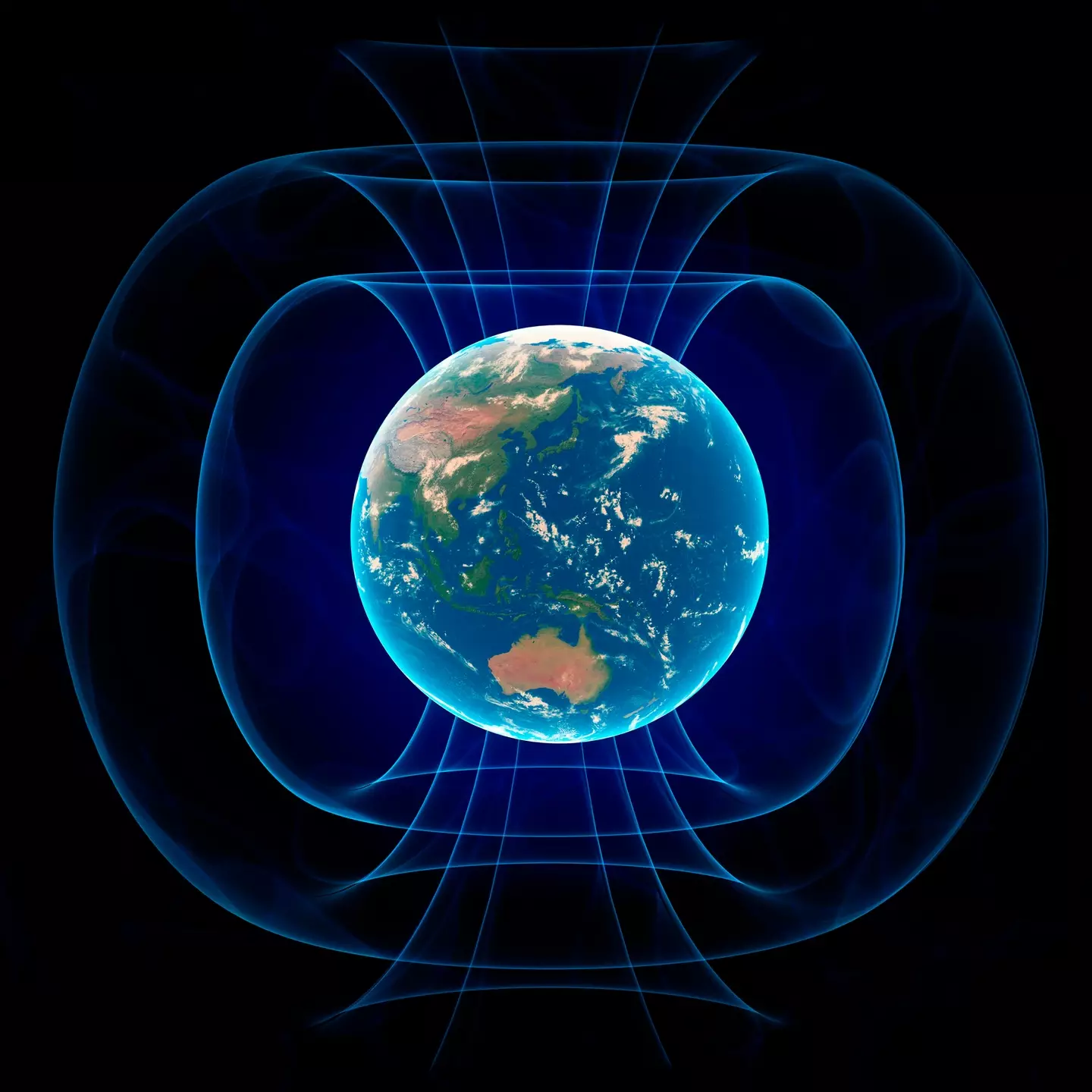The Earth’s magnetic North Pole, initially located in northern Canada, has shifted towards the Arctic and is now moving at a rapid rate towards Russia.
Deep within our planet lies the outer core, consisting of a vast pool of molten iron. As the planet rotates, this molten iron moves, generating a magnetic field.
Thus, Earth acts as though a giant magnet resides at its core, creating two primary magnetic directions – north and south.
The BBC provides further insight: “A compass needle is a very small, thin magnet. Today, the north pole of a compass needle points towards the ‘top’ of the Earth. This means that the top of the Earth must be acting as a South magnetic pole (unlike poles attract).
“Changing temperatures and the liquid iron flowing around the core cause the strength of the magnetic field to change but also cause the poles to switch places. Today, the top of the Earth is a South pole but in the past it has been a North pole.”
They further explain: “Scientists have shown that there have been almost 200 pole switches in the last 100 million years. The last one was about 800,000 years ago.”
With that explanation of our magnetic field, let’s delve into the ‘unexpected’ ways the shifting magnetic North pole could impact our phones.

Speaking to The Independent, Dr. William Brown, a global geomagnetic field modeller for the British Geological Survey (BGS), noted that the magnetic pole was historically positioned along the northern shores of Canada. However, by the 1990s, it had migrated into the Arctic Ocean and is now progressively making its way to Russia.
While some might jokingly speculate about Russia’s involvement, the reality is that these shifts are influenced by solar storms and winds, not geopolitical factors.
Dr. Brown elaborated to the UK publication that the magnetic North Pole has been drifting approximately 10km to 15km annually. For New Yorkers, that’s akin to the distance from Yankee Stadium to the Brooklyn Bridge.

Yet, from the early 2000s through the end of the 2010s, this drift accelerated dramatically to about 55km annually, comparable to the distance from Brooklyn Bridge to Stamford, Connecticut.
Recently, its pace has slowed to 25km annually as it approaches Siberia, a rate consistent over the past five years. This distance is roughly from the Brooklyn Bridge to Wakefield at the edge of New York City.
Without intervention, this phenomenon could severely disrupt navigation on our phones. Thankfully, the World Magnetic Model, developed by the BGS and the National Oceanic Atmospheric Administration, addresses these changes.
This model aids in the calibration of smartphone compasses.
“The world magnetic model is embedded in pretty much any piece of technology, from smartphones to cars and military jets,” Brown mentioned.

